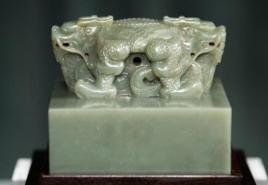How to create a rainbow using a mirror. Getting a rainbow at home
You don't have to wait for the storm to subside to see a rainbow. We will tell you how at home. Children will definitely like this one. In addition, using his example, you can easily explain to your child how a rainbow appears in the sky.
Cool days are the best time to spend time with your child. Children like various experiments very much, and with their help it is very simple to explain physical, chemical and natural phenomena. We offer, with the help of which everyone can clearly learn the principle of the formation of a rainbow.
Children love to draw a rainbow and depict it with the brightest colors. When the sun peeps out during the rain, the sunlight refracts in water droplets and "breaks up" into several colors. Everyone knows that there are seven colors of the rainbow and they are arranged in a strict sequence: red — orange — yellow — green — blue — blue — purple .
But to see all the colors of the rainbow, do not look out the rain outside the window. A rainbow can be made with your own hands at home. How? Now we will tell you everything.
To make a rainbow with your own hands, you will need:
- Small vessel (saucepan)
- Sunlight or electric
- White surface or sheet of paper
- Mirror
How to make a rainbow with your own hands
1. Fill a small container halfway with water.
2. Place a mirror in the water at an angle.
3. Direct the light from the flashlight into the water where the mirror goes under it (or, if you prefer to experiment with daylight, take the dish outside and place it so that the rays hit directly into the mirror under the water).
4. Hold a white sheet of paper over the mirror, adjusting the angle so that a rainbow appears.

How a rainbow is formed: the principle of refraction
Of course, your mini rainbow is different from the one that appears in the sky after rain, but they have the same basic color characteristics. Why? Your rainbow demo and the original work the same way: refraction and reflection.
Refraction is the bending of light as it travels through a medium, such as glass or water. Refraction can even cause the clock hands to go backwards when viewed through a glass of water.
When you direct a light beam from a flashlight (or white light coming from the sun) into the water, the light bends. But white light is far from one color - it is a combination of all visible colors. Therefore, when white light is bent, all of its components (red, orange, yellow, green, blue, and indigo) are bent too. Each of these colors does this at a different angle because each color moves at a different speed inside water or glass.
When you reflect light from water with a mirror, you are reflecting white light that breaks down (from refraction) to the full spectrum of colors. This is how the rainbow appears!

The appearance of a rainbow after rain
When a rainbow forms in the sky, the same principle applies. Millions of small water droplets refract sunlight. The angle at which we view these water droplets determines what color we see in them.
Experiment with your child and see where all the colors of the rainbow can be seen. Maybe in a drop of water in the garden or on a CD? Explaining natural phenomena with specific examples will help the child better assimilate scientific information that is still difficult for him.
Everyone likes the rainbow - both children and adults. Its colorful overflows attract the eye, but its value is not limited to just aesthetics: it is also a great way to interest a child in science and turn the knowledge of the world into an exciting game! To do this, we suggest that parents conduct several experiments with their children and get a real rainbow right at home.
In the footsteps of Newton
In 1672, Isaac Newton proved that ordinary white is a mixture of rays of different colors. "I darkened my room," he wrote, "and made a very small hole in the shutter to let in sunlight." On the path of the sunbeam, the scientist placed a special triangular glass - a prism. On the opposite wall, he saw a multi-colored strip, which he later called the spectrum. Newton explained this by the fact that the prism decomposed white light into its constituent colors. Then he placed another prism in the path of the multi-colored beam. With this, the scientist re-collected all the colors into one ordinary sunbeam.
To repeat the experience of a scientist, you do not need a prism - you can use whatever is at hand. In fine weather, place a glass of water on a table near a window on the sunny side of the room. Place a sheet of plain paper on the floor near the window so that the sun's rays fall on it. Dampen the window with hot water. Then change the position of the glass and sheet of paper until a small rainbow plays on the paper.
Rainbow from the looking glass
The experiment can also be carried out both in sunny and cloudy weather. It requires a shallow bowl of water, a small mirror, a flashlight (if there is no sun outside the window) and a sheet of white paper. Submerge the mirror in water, and place the bowl itself so that the sun's rays fall on it (or direct the beam of a flashlight to the mirror). Change the angle of inclination of objects if necessary. In the water, the light should refract and break into colors, so that a small rainbow can be “caught” with a sheet of white paper.
Chemical rainbow
Everyone knows that soap bubbles are rainbow colored. The thickness of the walls of the soap bubble changes non-uniformly, constantly moving, so its color is constantly changing. For example, at a thickness of 230 nm, the bubble turns orange, at 200 nm it turns green, and at 170 nm it turns blue. When, due to the evaporation of water, the wall thickness of the soap bubble becomes less than the wavelength of visible light, the bubble stops shimmering with the colors of the rainbow and becomes almost invisible before bursting - this happens when the wall thickness is about 20-30 nm.
The same thing happens with gasoline. This substance does not mix with water, therefore, being in a puddle on the road, it spreads over its surface and forms the thinnest film that creates beautiful iridescent stains. We owe this miracle to the so-called interference - or, more simply, the effect of light refraction.
Music rainbow
Interference causes iridescent play on the surface of CDs. This, incidentally, is one of the easiest ways to "get" a rainbow at home. In the absence of the sun, both a table lamp and a flashlight will do, but in this case the rainbow is less bright. By simply changing the angle of the CD, you can get a rainbow stripe, a circular rainbow, and restless rainbow bunnies on a wall or any other surface.
Besides, what is not a reason to teach a child the basics of musical literacy? After all, initially Newton distinguished only five colors in a rainbow (red, yellow, green, blue and purple), but then he added two more - orange and purple. Thus, the scientist wanted to create a correspondence between the number of colors in the spectrum and the number of notes of the musical scale.
Projector night light
If a temporary solution is not enough for you, you can make a rainbow at home "completely" - for example, with the help of such a miniature projector. It projects a rainbow onto the walls and ceiling - even at night, even on a cloudy day, when there is a lack of invigorating colors ... The projector can work in two modes: all colors together, or each separately. On the eve of the New Year holidays, this is perhaps a good idea for a gift for a child or just a creative person.
Window suspension
Another version of the “rainbow without worries” (which, however, can be enjoyed only during daylight hours, and only in sunny weather) is the so-called rainbow disc, made using modern laser technologies. A glass prism measuring 10 centimeters in diameter is enclosed in a chrome plastic case. It is attached to the window with a suction cup and, transforming sunlight, projects it onto the walls, floor and ceiling of the room. There are 48 color lines in total: red, orange, yellow, green, blue, indigo, purple and all in between.
Flip book with 3D effect
In the last few years, books have begun to appear with interesting and unusual effects - for example, "flip-books" with running pictures. Many of us are familiar with this technology from our own childhood: we drew pictures on the margins of a notebook, and then revived them, quickly flipping through the pages. A book based on this fun was created by Japanese designer Masashi Kawamura. If you quickly flip through it, you can see a volumetric rainbow!
If you wish, you can make a similar hand-made rainbow with your own hands, and at the same time visually demonstrate the animation effect to the child. To do this, you need to print on paper or draw squares of rainbow colors on each page of your notebook. In total, you need 30-40 sheets. At the same time, it is important to take into account that on the one side of each page you need to draw them in the usual sequence, and on the other - in the opposite, otherwise you will not get a rainbow.
A rainbow to touch
And one more fun way to get a rainbow that will brighten any modern interior without taking away a centimeter of space and filling it with a rainbow glow. To do this, Mexican designer Gabriel Dawe suggests using skillfully stretched sewing thread. With such an installation, of course, you have to tinker for an hour or two, but the result is worth it. It is not for nothing that the artist's works were a huge success in many countries, including the USA, Belgium, Canada and Great Britain.
In this article, we will try to understand if it is difficult to take photos with the rainbow effect, and how exactly to do it. It's not so difficult to open, you just need to choose the most suitable method. After all, if it does not work out on the first try, there is always a second, third and subsequent ones, which may well become successful.
How to make a rainbow on your face? It's complicated?
Many who are fond of photography, at least once asked the question: "How to make a rainbow on your face?" This trend appeared thanks to the social network Instagram and it-girl.Some time ago, she posted pictures with the rainbow effect in her account. And literally at once she gained a lot of followers, because most of her subscribers and people who accidentally find her pictures liked the idea of \u200b\u200bthe light refraction effect. And many wondered how to take a photo with a rainbow on their face. Anyway, a trend is a trend. And in this article we will try to figure out whether it is difficult to take photos with the rainbow effect. What does that require. And how to take a photo with a rainbow on your face. Follow the guidelines in this article. Experiencing the presented methods firsthand, you will no longer ask the question: "How to take a photo with a rainbow on your face?" After all, you will know exactly how to achieve this trend effect!
Catching a rainbow or painting?
To begin with, let's figure out the elementary: you can get the rainbow effect on a photo in two ways - with the help of reflectors and with the help of photo editors. The first method may seem quite time-consuming and complicated, which is only partially true, while the second, in turn, will seem easy for those who are at least a little versed in Photoshop and photo editors. The first method is partially doomed to failure if you don't have enough patience or hands (which really can be an obstacle), because the first time you will not necessarily get exactly the effect you expect. To implement the idea, you will need an assistant who will guide the rainbow to the desired place and take pictures immediately. The second method is less risky and less expensive in resources - both human and material, but for it you will need to try to figure out the photo editors yourself.

Water and mirror
How to make a rainbow on your face using water and a mirror? There are two ways to get the effect. For the first, we need a dark room with light walls. You need to put the mirror in a bowl of water so that one half of it is in the water, and the other half is outside. Then you need to take a flashlight and direct its rays along the mirror so that you end up seeing the rainbow as a reflection on the surface of the face. For the second method, you need sunny weather, a light background, all the same bowl of water and a mirror. The mirror must again be placed in a bowl of water so that only one half of it is under water and the other half is outside. Place this entire structure next to the window so that the sun's rays fall directly on it. Then, with the help of a white sheet, which will act as a reflector, catch the rainbow first on it, and then, having adapted, already on the face of the model.
Glass
How to make a rainbow on your face with a glass of water? First, we need an old Soviet faceted glass or its modern stylization (or, for example, a crystal vase from the same era with facets), which must be filled with water and placed in front of a window on a sunny day. Next, you need to take a light background and stand in front of a glass of water. After that, you need to moisten the window with hot water and adjust the glass of water until you see a rainbow.

Prisms are in use!
If you accidentally find yourself in the house of the prisms that are usually used in physics lessons, you are absolutely lucky! Such prisms can be in the form of a triangle, a ball, a cube and other shapes, and by shooting through them, you can achieve an interesting effect of broken or inverted photographs that seem to be in a haze. If, with the help of such a prism, you try to reflect the sunbeam on your face, you can easily and effortlessly get the rainbow effect.

Using CD
How to make a rainbow on your face using a CD? First, find a disc without scratches or scuffs on the mirrored side, wipe it thoroughly so it is not dusty. There are two ways to get a rainbow with it - in a dark and a light room. In order to get a rainbow in a gloomy room, you need to shine a flashlight on a disk and reflect it on your face. In order to get the rainbow effect in a bright room, it is enough to catch the sun's rays on a disk and reflect them on the face with it. In order to get a rainbow in motion, if you are shooting a video, this is the most suitable method. After all, the disc can be gently twisted in different directions and watch how the colors move on your face.

We draw!
How to make a rainbow effect on your face without using materials at hand? For advanced users of social networks Instagram and Snapchat, this is no longer a secret. After all, in Stories mode, you can find the rainbow filter and take a photo or video. The same function is available in the PicsArt photo editor, where you can find the Rainbow Dreams filter, with which you can draw a rainbow on a photo without resorting to Photoshop. In general, there are many ways.
If you still haven't decided on your face, "Photoshop" will be the best assistant in this. Knowing how to work with layers in this program, you can easily achieve the desired effect. To do this, create a new layer and use the "Gradient" tool, select the appropriate gradient, the location of the future rainbow, its brightness and saturation.
AMAZING NEARBY. RAINBOW IN THE HOME CONDITIONS
Ekimova Valeria
Pupil 2 "b" class GBOU SOSH № 1 RF, Chapayevsk
Evseeva Oksana Pavlovna
supervisor, teacher of the highest category, primary school teacher, GBOU SOSH No. 1
RF, Samara region, Chapayevsk
We often notice strange and unusual phenomena in nature. They amaze our imagination and are remembered for a long time. Many of these amazing phenomena have already been explained by scientists, but they continue to remain mysterious for us. I would attribute a rainbow to such phenomena.
How does a rainbow form? Can this beauty be observed at home? What kind of rainbows are there? I have to find the answers to these questions.
The object of my research - natural phenomenon RAINBOW.
I'm sure - the topic is relevant... After all, it is very important to understand how and why something that so fascinates our eyes happens.
The purpose of my work - try to repeat such a natural phenomenon as a rainbow at home.
In my work, I set myself the following tasks: 1. Find out under what conditions a rainbow occurs. 2. To study what types of rainbows are in nature. 3. Get acquainted with legends and myths, symbols and other aspects of human life associated with the rainbow. 4. With the help of experiments, find out if it is possible to reproduce a rainbow at home.
Research methods:analysis of publications, materials on the Internet on this topic; systematization and classification of the studied material; observation; experiment.
The meaning of the word "rainbow".The rainbow is God's arc, the celestial arc is a celestial phenomenon; seven-color arc under the clouds, from the sun behind the rain. (Dictionary of V. Dahl).
Legends and myths.The ancient Greeks believed that the rainbow is the smile of the goddess Iris. And in the Bible, the rainbow appears after the great flood. In Armenian mythology, the rainbow is the belt of Tire (originally the sun god, then the god of writing, arts and sciences). The Slavs believed that a rainbow drinks water from lakes, rivers and seas, and then it rains down with sweat. Sometimes she swallows fish and frogs with water, so sometimes they fall from the sky.
Study history.Why does such a beautiful color picture appear in the air? I looked for the answer to this question in additional literature and the Internet. Here's what I learned.
In 1672, Isaac Newton proved that ordinary white is a mixture of rays of different colors. "I darkened my room," he wrote, "and made a very small hole in the shutter to let in an appropriate amount of sunlight." On the path of the sunbeam, the scientist placed a special triangular glass - a prism.
On the opposite wall, he saw a multi-colored strip - a spectrum.
The word spectrum comes from the Latin "spectrum" - visible.
Newton explained this by the fact that the prism decomposed white into its component colors. Then he placed another prism in the path of the multi-colored beam. By this, the scientist collected all the colors into one ordinary sunbeam. Moreover, initially Newton distinguished only five colors - red, yellow, green, blue and purple. But then, Newton added to the five listed colors of the spectrum two more - orange and indigo. He wanted to create a correspondence between the number of colors in the spectrum and the number of fundamental tones of the musical scale. Or maybe the number 7 had some other symbolic meaning for him. When it rains, there is a huge amount of water droplets in the air. The sun's rays pass through water droplets, white light refracts and decomposes into 7 colors of the spectrum from red to violet.
Refraction of light.Refraction of light is the change in the direction of propagation of light (light rays) when passing through the interface of two different transparent media (for example: air and water). An example of light refraction: if a straw is lowered into a glass of liquid, it will seem to us bent due to the refraction of light (Fig. 1). Each droplet of liquid becomes a tiny prism. Since there are a lot of prismatic droplets after rain, the rainbow is obtained in half the sky.
Picture 1 ... Refraction
Experience 1.I decided to make sure that the light has seven colors. For this I tried to conduct an experiment. From cardboard I cut out a circle with a radius of about 5 cm. I divided the circle into 7 sectors. I painted each sector with the desired color (like a rainbow) (Fig. 2). I made a small hole in the very center of the circle and inserted a toothpick into it. I got a top. I launched the top. When rotated, it turned white. Why? This is the process of collecting flowers. White is the keeper of all colors on earth.

Picture 2 ... Volchok - rainbow
Types of rainbows. The rainbow that occurs after rain is the primary rainbow. Sometimes we can see an additional rainbow. In it, the colors follow in reverse order from purple to red. Maybe even a third and fourth rainbow. Why does the second rainbow arise? Also due to the refraction and reflection of light in water droplets. But before turning into the "second rainbow", the rays of sunlight have time to reflect twice, and not once, from the inner surface of each droplet. On a bright moonlit night, you can also watch a rainbow from the moon. But the receptors of the human eye do not perceive colors in low night light, and the lunar rainbow looks whitish. The brighter the light, the more "colored" the rainbow. And there is a rainbow when rain is impossible - a frosty winter? It turns out that such a miracle also happens. In winter, ice crystals "float" in the air. They divide white into seven colors.
Experiment 1.Let's try to repeat the rainbow at home. For this i need spray gun as rain and sunbeam. We fill the spray gun with water and on a sunny day we create a cloud of droplets in the air (Fig. 3). On them we observe a rainbow (Fig. 4).

Picture 3 ... Cloud of drops

Picture4 ... Rainbow
Conclusion: A rainbow at home, as in nature, turns out. This is due to the refraction of a sunbeam in water droplets and splitting it into a spectrum.
Experiment 2.I needed a CD, a flashlight and a smooth surface (wall). I direct the flashlight beam to the disk. A rainbow appears on the wall! (Fig. 5).

Picture 5 ... Rainbow on the wall
Experiment 3.The experiment required a container with water, a mirror, a beam of light, and a smooth surface. I poured water into a bowl. I set the mirror so that one part of it was under water, and the other part was above it. I direct the mirror towards the smooth surface. I direct the beam to different parts of the mirror so that the reflected light falls on the wall.
Conclusion: The rays of light hit the mirror and are reflected. But, passing through the water, white light refracts. As a result, we get a rainbow on the wall.


Picture 6 ... Passing through water, light refracts
Experiment 4.To me needed a solution for soap bubbles.


Figure 7. Rainbow patterns on soap bubbles
Conclusion: Thin soap films on the surface of the bubble are constantly moving and refracting light. We see constantly changing rainbow patterns (Fig. 7).
Based on the results of my work, I can draw the following conclusions. You can get a rainbow at home. An artificial light source can be used instead of a sunbeam. A rainbow can be observed not only during the day, but also at night, and even in winter. The goal - to learn about the rainbow and try to repeat it at home - was achieved by me. I have conducted experiments and proved that the rainbow effect can be obtained at home and at any time of the year admire this beautiful phenomenon, which still holds many mysteries. The results that I obtained from the study of the rainbow should be interesting and useful to my classmates.
Bibliography:
- Bogdanov K.I. “Not everything is so simple.” / September 1 - 2006, - No. 3. - p. 31-33.
- Burova S.A. Unusual natural phenomena. / September 1, 2003, no. 3.
- Geguzin Ya.E. Who makes the rainbow? - Kvant, 1988, no. 6.
- Family photo archive.
- E. D. Trifonov Once again about the rainbow. - Soros educational journal, - 2000, - v. 6, - No. 7.
- [Electronic resource] - Access mode. - URL: ru.wikipedia.org/wiki/Raduga.
- [Electronic resource] - Access mode. - URL: http://slovari.yandex.ru/dict/bse/article/00055/38400.htm.
What could be more beautiful and fantastic than a rainbow? Only a rainbow made with your own hands. The easiest way to make a rainbow is to pass light through a prism. But the prism is not always at hand, and I really want to experiment with the rainbow.
There are several ways to make a rainbow at home from available tools, let's look at a few of them.
A rainbow from a disk
This is a very simple way to get a rainbow from an object that is found in almost every home today - a CD. The disc will fit any CD \\ DVD \\ Blueray, it is enough to reflect the sunlight from it and a beautiful rainbow will play on the white wall.
Rainbow from water
To do this, you need to pass light through the water. For example, you can put a glass of water on a windowsill on a sunny day and the light passing through the water will create a rainbow. If that doesn't work, you can take a mirror and put it in a glass of water and try to reflect the sunlight on it.
You can also take a flat, shallow container and place a mirror in it at an angle so that one half is above the water and reflect sunlight onto a white surface. The rainbow will appear immediately. The larger the container with water and the mirror, the larger the rainbow.
If the sky is covered with clouds and the sun does not shine at all, a rainbow can be made in the same way using a flashlight. But such a rainbow will not be so bright, so you will have to tightly curtain the curtains and then start experimenting.
Well, if the sun is shining brightly, there is another surefire way to make a rainbow. But for him you will have to go outside and find a hose connected to a tap with water. Now it remains to pinch the end of the hose so that the water comes out of it in a fine spray, and direct it up into the sun. A rainbow will play in the spray of water.







